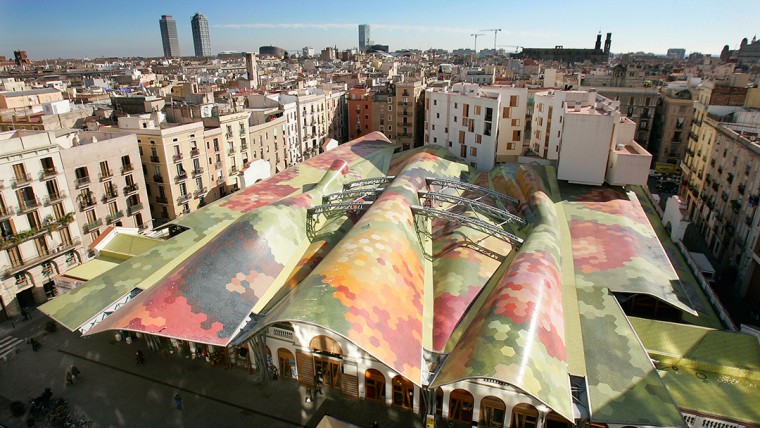meet.barcelona

Visit and love it
Sant Pere and Santa Caterina
Download date: 10/04/2025

Carving out a path between narrow streets and charming little squares, the medieval neighbourhoods of Sant Pere and Santa Caterina concentrate the essence of historical Barcelona.
-
Urban spaces
Medieval neighbourhoods
Walking through Sant Pere i Santa Caterina, you find surprises around every corner. Roman remains, a reminder of the Rec Comtal irrigation canal, vestiges of the old textile guilds. These medieval neighbourhoods are open history books in the middle of the city. Crossing narrow streets and squares you come to Plaça de Sant Pere, where you can see the remains of the old Romanesque Benedictine convent, Sant Pere de les Puelles, which was the origin of the neighbourhood. This convent was one of the richest in Barcelona, as the Benedictines took in many of the daughters of the nobility who wanted to take their vows. The other part of the neighbourhood, Santa Caterina, also had religious beginnings, as it grew up around the Gothic convent of the Dominican Order. And from a nunnery, to a market. In 1848, a fire affected the convent, which was demolished. Its site became the location of the first covered market in an enclosure within the city: the Santa Caterina market, a Neoclassical construction, completely renovated in 2005 by the architect Enric Miralles, who designed the ceramic mosaic roof that has turned it into one of the neighbourhood’s iconic buildings.
Yesterday’s names and today’s colours
In the 18th century, the Santa Caterina and Sant Pere neighbourhoods became two important industrial centres, particularly for textile manufacturing. The street names are the best way to follow in these footsteps: rope makers, carders, blanket weavers, cotton makers, Plaça de la Llana (wool square), narrow winding streets, built along the ancient Roman roads where hundreds of factory houses clustered together to house the workers. Population pressure increased, and in 1835, in order to let a little air in, Carrer Princesa was opened, the first paved street in the city. But it was not until the 20th century that the whole area was reorganised with the building of Via Laietana, a wide avenue that divides the city’s historical centre into two, with Santa Caterina, Sant Pere and La Ribera on one side and El Gòtic on the other.
Santa Caterina and Sant Pere, two of the neighbourhoods in Ciutat Vella with the most personality, have now come back to life with a multitude of small restaurants, shops and bars, and the area is a mixture of multiculturalism and independent artists that attract visitors. Poets, painters, nobles and even thieves, like the bandit Joan de Serrallonga, have lived here. Strolling around here is to live the city’s history on the streets themselves.
 :
:
Location and contact
Location and contact

Sant Pere and Santa Caterina
- Address:
- C Sant Pere Més Baix, 68
- Districte:
- Ciutat Vella
- Neighborhood:
- Sant Pere, Santa Caterina i la Ribera
- City:
- Barcelona
Observacions
Discover other related points of interest
-
Casal de Barrio Pou de la Figuera
Carrer de Sant Pere Més Baix 70
-
Mescladís
C Carders 35
-
Tamaia viure sense violencia SCCL
C Ripoll 25


